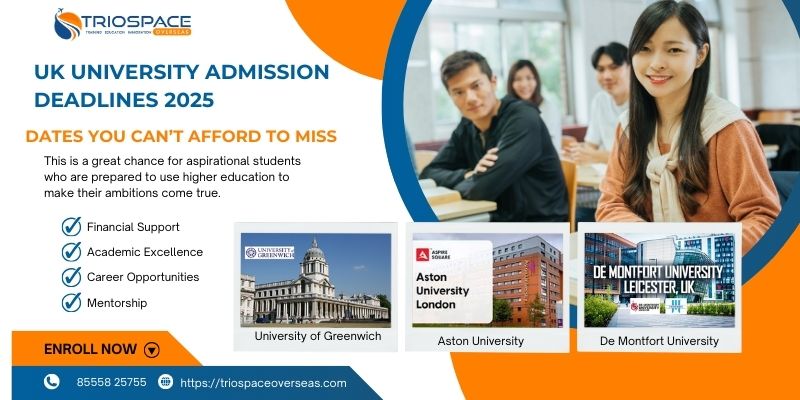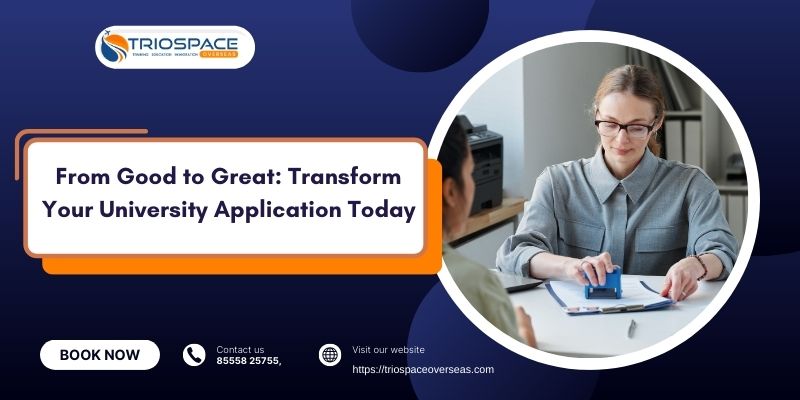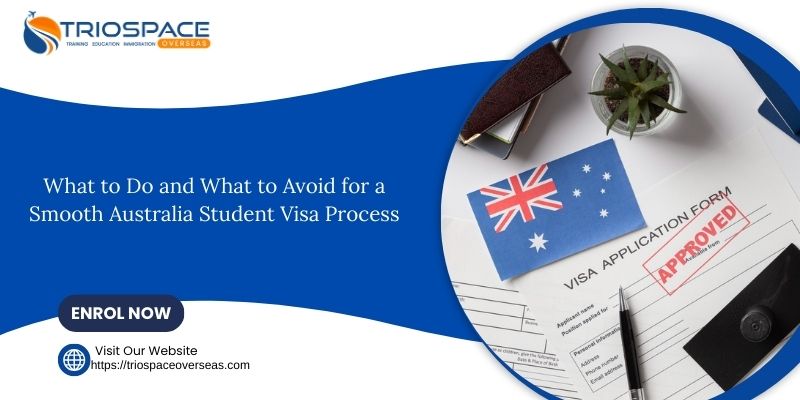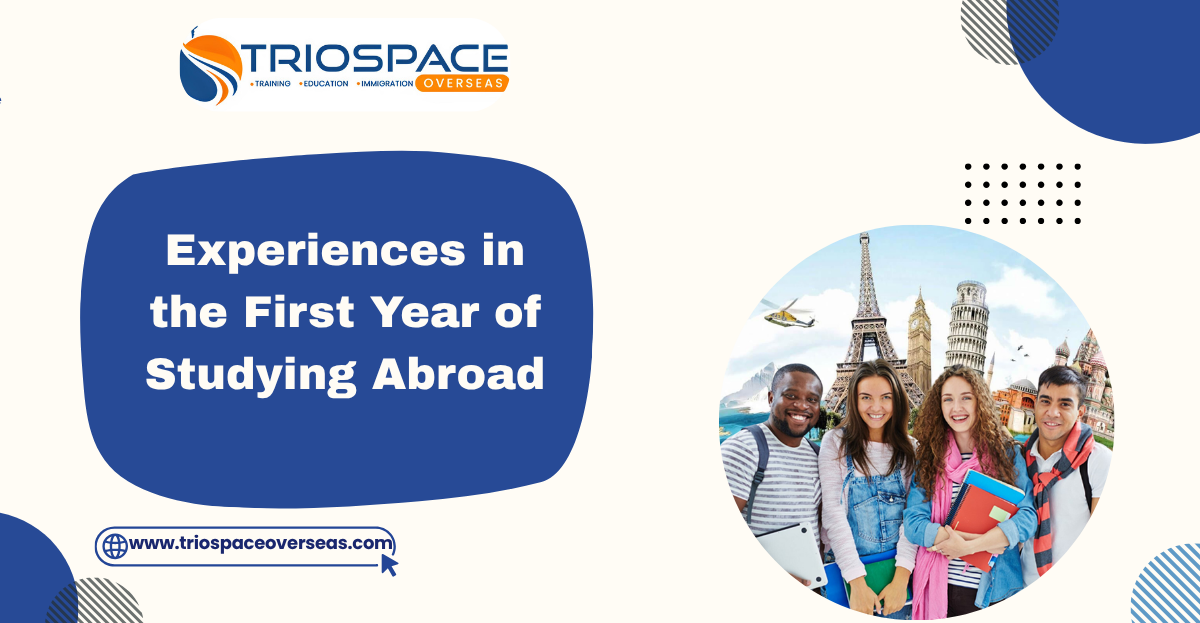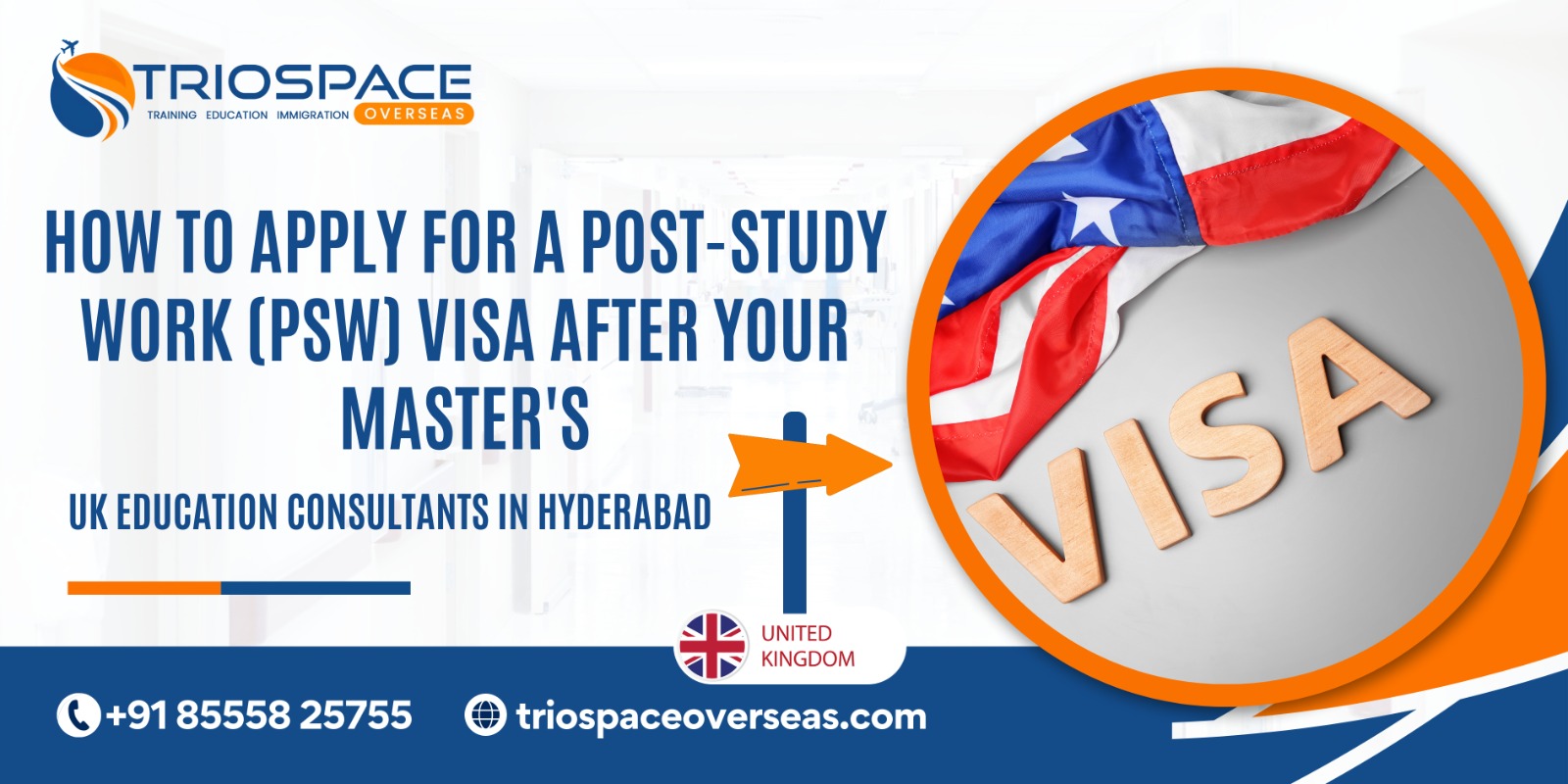
Student Visa Application Process for USA in 2024
Studying in the United States is a dream for many international students, offering a world-class education and diverse cultural experiences. However, before embarking on this exciting journey, one must navigate the complex process of obtaining a student visa. In this guide, we’ll explore the ins and outs of the Student Visa Application Process for the USA in 2024.
Types of Student Visas
F-1 Visa for Academic Studies
The F-1 visa is the most common visa for students pursuing academic programs in the U.S. It is designed for full-time students enrolled in accredited universities, colleges, or language schools.
J-1 Visa for Exchange Visitors
The J-1 visa is for exchange visitors participating in approved exchange programs, fostering cultural exchange and mutual understanding between the U.S. and other countries.
M-1 Visa for Vocational Studies
The M-1 visa is intended for students enrolling in non-academic or vocational programs, such as technical or vocational schools.
For more information on student visas, please visit the website of the U.S. Department of State: https://travel.state.gov/content/travel/en/us-visas/study/student-visa.html
Please Watch our video for a complete process of How to Study in USA | Step by Step USA Visa Process in Telugu | 2024-2025 Intakes
US Student Visa Eligibility Requirements
Acceptance at a U.S. Institution:
You must have an acceptance letter from a U.S. school or university that is approved by the Student and Exchange Visitor Information System (SEVIS).
Proof of Financial Support:
You need to demonstrate that you have the financial means to cover your tuition, living expenses, and other associated costs during your stay in the U.S. Providing bank statements, letters of recommendation, or affidavits of support may be necessary for this.
Intent to Return:
You must convince the consular officer that you have strong ties to your home country and intend to return after completing your studies. This helps establish that your stay in the U.S. is temporary.
English Proficiency:
Most U.S. institutions require proof of English proficiency through standardized tests such as the TOEFL (Test of English as a Foreign Language) or IELTS (International English Language Testing System).
Form DS-160:
You need to complete the online nonimmigrant visa application form DS-160, providing accurate and honest information about your background and intentions.
SEVIS Fee:
Prior to attending your visa interview, pay the SEVIS fee. This fee funds the SEVIS system, which tracks and monitors students and exchange visitors in the U.S.
Visa Interview:
Attend a visa interview at the U.S. embassy or consulate in your home country. Be prepared to discuss your academic plans, financial situation, and intentions to return home.
Application Deadline for US Fall 2024 Intake:
Application deadlines for US student visas for the Fall 2024 intake typically vary depending on the university and program, but they generally fall between November 2023 and February 2024. Some universities may offer early action deadlines as early as September or October 2023.
It is important to check the specific deadlines for the universities and programs you are interested in, as they can vary widely. You should also start the application process early, as it can take several months to gather all of the required documentation and complete the application forms.
Here is a general timeline for the US student visa application process for the Fall 2024 intake:
September 2023 – December 2023: Start the application process for the Fall 2024 intake.
January – February 2024: The deadline for application and document uploading closes.
January/February – March 2024: Admission process and shortlisting.
March – July 2024: Publication of results.
July – August 2024: Receive visa and make travel arrangements.
September 2024: Start of classes for the Fall 2024 semester.
Student Visa Application Process for USA in 2024
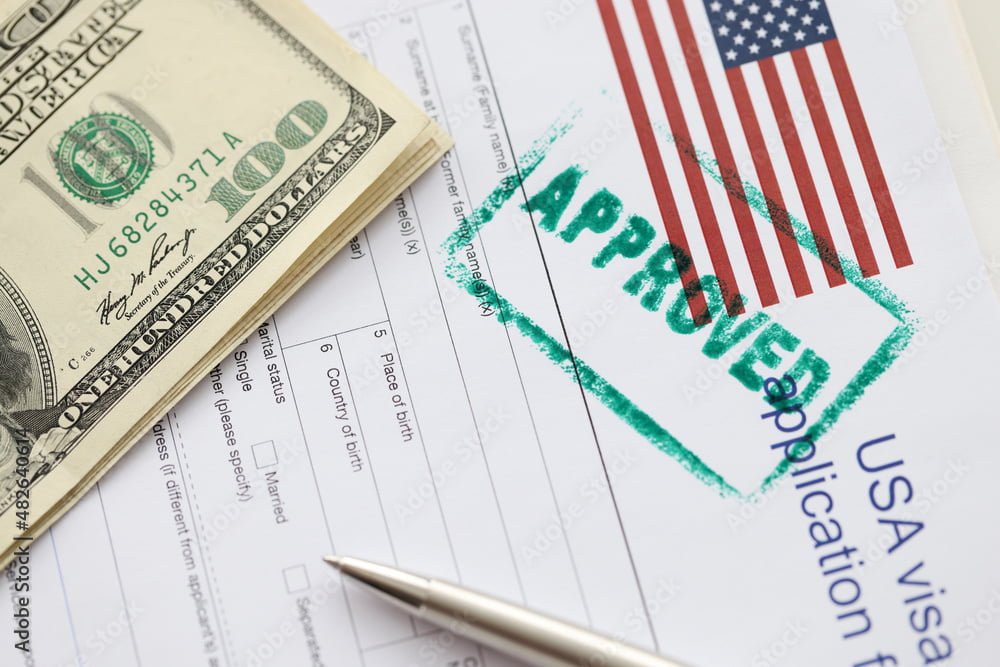
The process of applying for a US student visa in 2024 involves several steps and requires careful preparation. Here’s a comprehensive guide to navigating the application process smoothly:
Step 1: Choose a SEVP-Approved Institution
Begin your journey by selecting a reputable academic institution that is authorized by the Student and Exchange Visitor Program (SEVP) to enroll international students. Research various universities, colleges, and vocational schools that offer programs aligned with your academic interests and career aspirations.
Step 2: Apply for Admission
Once you’ve identified your preferred institution, proceed with the application process for admission. Each institution has its own specific requirements and deadlines, so check their websites for detailed information. Generally, you’ll need to submit transcripts, standardized test scores (if applicable), letters of recommendation, personal statements, and application fees.
Step 3: Receive Form I-20
Upon receiving an acceptance letter from your chosen institution, they will provide you with a Form I-20, Certificate of Eligibility for Nonimmigrant (F-1) Student Status. This document serves as proof of your acceptance and eligibility for a US student visa.
Step 4: Complete Nonimmigrant Visa Application (DS-160)
The next step involves creating an online account on the US Department of State’s Consular Electronic Application Center (CEAC) website. Fill out the Nonimmigrant Visa Application (DS-160) form, providing accurate and complete information about your personal details, travel history, educational background, and financial support.
Step 5: Schedule and Attend a Visa Interview
After completing the DS-160 form, proceed to schedule a visa interview at a US embassy or consulate in your home country or region. The interview typically involves questions about your study plans, financial support, and ties to your home country.
Step 6: Pay Visa Application Fees and SEVIS I-901 Fee
Pay the required visa application fee and SEVIS I-901 fee, which is a mandatory charge for all nonimmigrant students and exchange visitors. The payment can be made online or at designated banks or payment centers.
Step 7: Prepare and Gather Supporting Documentation
Gather all necessary supporting documents to present during the visa interview. These may include:
- Valid passport
- Form I-20
- DS-160 confirmation page
- Visa application fee receipt
- Photograph
- Financial documents (bank statements, scholarship letters, sponsors’ financial statements)
- Academic transcripts and test scores
- English proficiency test scores (if applicable)
- Ties to home country documents (family ties, property ownership, etc.)
Step 8: Attend Visa Interview and Submit Documentation
Arrive at your scheduled visa interview on time with all the required documentation. During the interview, answer questions honestly and confidently, providing clear explanations and supporting your statements with relevant documents.
Step 9: Receive Visa Decision and Travel to the US
The visa officer will inform you of the decision at the end of the interview. In the event that your visa application is granted, the visa stamp will be applied to your passport. Make travel arrangements and plan your arrival in the US before the start of your academic program.
Complying with US Immigration Laws at Student Visa Process
Complying with US immigration laws is crucial for maintaining your student visa status and avoiding potential issues that could jeopardize your stay in the country. Here’s a summary of key immigration regulations to adhere to:
Maintain Full-Time Enrollment: As a student visa holder, you are required to maintain full-time enrollment in your academic program. This typically means taking a minimum of 12 credits per semester or pursuing a full-time vocational training program. Dropping below full-time enrollment without prior authorization from the Student and Exchange Visitor Program (SEVP) can lead to visa violation.
Notify SEVP of Any Changes: Inform SEVP promptly of any changes in your circumstances, such as a change of address, program, or academic standing. Failing to notify SEVP can result in inaccurate records and potential complications in maintaining your visa status.
Work Authorization: Student visas typically allow for limited work authorization on campus or off campus with special permission from SEVP. Understand the eligibility criteria and application process for work authorization to avoid unauthorized employment.
Travel Restrictions: Student visas may restrict travel outside the US. If you plan to travel abroad, obtain prior authorization from SEVP to maintain your visa status.
Maintain a Valid Passport and Visa: Ensure your passport and visa remain valid throughout your stay in the US. Apply for visa extensions or renewals well in advance to avoid expiration issues.
Comply with Local Laws: Adhere to all local and state laws, including traffic regulations, alcohol consumption, and drug possession. Criminal convictions can lead to visa revocation and deportation.
Seek Guidance from Authorized Personnel: Consult with SEVP-designated school officials or immigration attorneys for clarification on immigration regulations and assistance with specific situations.
Avoid Unauthorized Activities: Refrain from engaging in activities that are prohibited for student visa holders, such as unauthorized employment, overstaying your visa, or working without proper authorization.
Maintain Ties to Home Country: Demonstrate ties to your home country, such as family connections, property ownership, or return plans, to reinforce your intention to depart the US after completing your studies.
Seek Timely Resolution for Issues: Address any immigration-related issues promptly and proactively. Failure to address concerns can lead to escalation and potential visa revocation.
Options after a Visa Denial at the Student visa process:
Receiving a denial for your US student visa can be a disappointing setback, but it doesn’t necessarily mean the end of your plans to study in the US. Here are some options to consider after a visa denial:
1. Identify the Reason for Denial:
The first step is to understand the specific reason for your visa denial. This information is usually provided in the denial letter or during the visa interview. Once you understand the reason, you can address it and apply again.
2. Reapply with Improved Documentation:
If the reason for denial is something you can rectify, such as providing more comprehensive financial documentation or improving your English proficiency scores, you can reapply with the improved documentation. Make sure to address the specific concerns raised by the visa officer.
3. Consider Alternative Institutions or Programs:
If the denial is due to concerns about your chosen institution or program, explore alternative options that may better align with your academic background and financial capabilities. Research other SEVP-approved institutions and programs that match your interests and qualifications.
4. Seek Guidance from Educational Consultants or Immigration Attorneys:
Consult with experienced professionals who specialize in international education and immigration law. They can provide expert advice, assess your situation, and help you develop a strong reapplication strategy or explore alternative pathways to studying in the US.
5. Consider Deferring Your Studies:
If you need more time to prepare your application or address any underlying issues, consider deferring your studies for a semester or year. This will give you more time to gather the necessary documentation, improve your English language skills, or strengthen your financial support plan.
6. Explore Alternative Study Destinations:
While the US is a popular destination for international students, consider other countries with strong academic institutions and welcoming immigration policies. Research study abroad opportunities in countries like Canada, Australia, New Zealand, or the UK.
7. Maintain a Positive Attitude and Persist:
Despite the initial setback, maintain a positive attitude and persist in your pursuit of studying in the US. Use the denial as an opportunity to learn, grow, and strengthen your application. Seek support from mentors, advisors, or international student organizations.
Remember, a visa denial is not a permanent roadblock. With careful analysis, appropriate action, and a positive outlook, you can overcome this challenge and continue your journey toward achieving your academic goals.
Conclusion:
Navigating the US student visa application process can be a complex and demanding endeavor, but it is also a rewarding one that opens doors to world-class academic opportunities and personal growth. By carefully planning each step, gathering the necessary documentation, and preparing for the visa interview, you can increase your chances of securing a visa and embarking on a fulfilling academic journey in the United States.
Remember, the key to success lies in thorough preparation, attention to detail, and a genuine desire to pursue academic excellence in the US. With dedication, perseverance, and adherence to immigration regulations, you can transform your student visa application into a stepping stone toward a successful academic experience in the United States.
FAQs
When should I start the application process for a US student visa?
You should start the application process for a US student visa as early as possible, ideally several months in advance of your desired travel date. This will give you ample time to gather the necessary documentation, complete the application forms, and schedule a visa interview.
How long does it take to process a US student visa application?
The processing time for a US student visa application can vary depending on the applicant’s country of origin, the workload of the embassy or consulate, and the completeness of the application. However, it typically takes several weeks to months to process a student visa application.
What happens if my student visa is denied?
If your student visa is denied, you will receive a letter from the embassy or consulate explaining the reason for the denial. You may be able to reapply with improved documentation or address the specific concerns raised by the visa officer. You may also want to consult with an educational consultant or immigration attorney for guidance.





